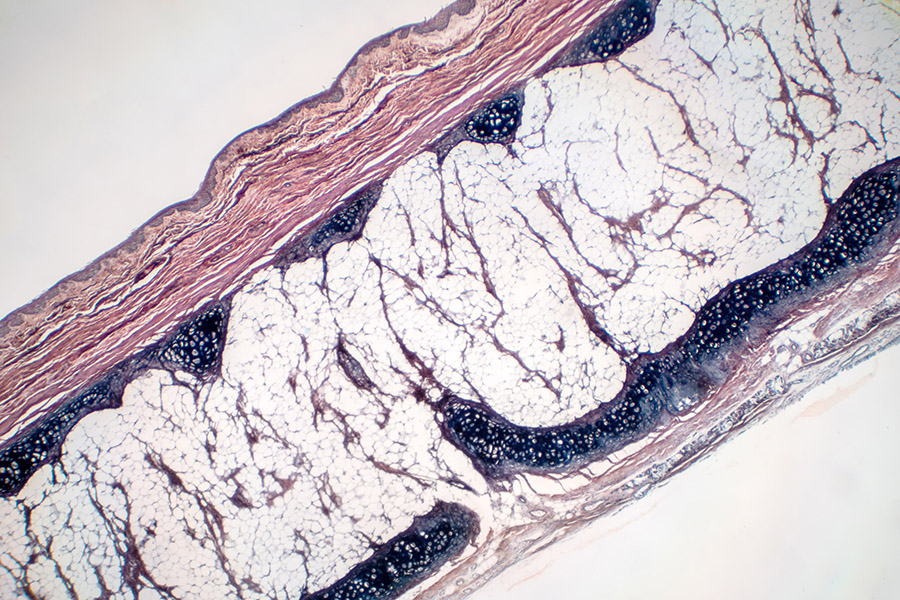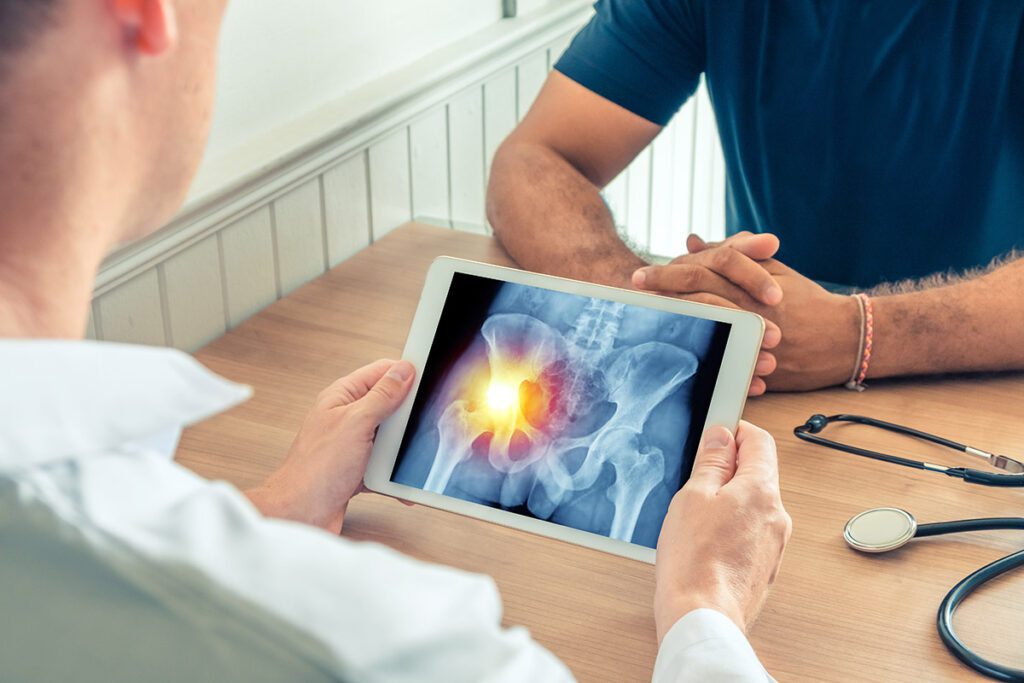

Hip Labral Tear
The labrum is the soft tissue that covers the socket of the hip and when developing degenerative issues, structural problems, or an injury a hip labral tear may develop. Treatment for a labral tear in the hip can be nonsurgical or require surgery depending on the severity and symptoms generally include pain and stiffness in the hip.
What is a Hip Labral Tear?
The hip consists of a ball (femoral head) and a socket (acetabulum) which are located at the top of the leg bone (femur). A hip labral tear is an injury to the labrum, which is the soft tissue that covers the acetabulum and helps the femoral head move smoothly within the socket while also sealing the ball within the socket, allowing the hip to move without pain or issue.
Hip Labral Tear Symptoms & Causes
When a hip labral tears, there can be several reasons for that to occur, such as:
- Degenerative health conditions: Osteoarthritis wears down the cartilage between joints, making the cartilage more prone to tearing. Both older age and excessive weight can increase the risk of developing osteoarthritis, which is a chronic condition that can cause pain and stiffness in several joints throughout the body.
- Structural ailments: Conditions that cause abnormal hip movement, such as femoroacetabular impingement (FAI). This condition is where the femoral head doesn’t fit properly into the socket, which causes long-term groin pain, limits movement, and can cause a hip labral tear.
- Injury: Trauma to the hip can result in a hip labral tear, often as a result of playing sports, such as soccer or football, where high-impact movements and repetitive movements are regularly common.
Hip labral tear symptoms aren’t always apparent, but generally include:
- Pain in the groin and/or area of the buttocks
- Hip pain
- Hip stiffness
- Feeling unsteady on the feet
- Clicking or locking sound in the hip area when moving
It’s important to note that hip discomfort can worsen when bending, moving, or rotating the hip.
Hip Labral Tear Treatment & Surgery
To know whether any of the symptoms listed are caused by a hip labral tear, a healthcare provider must perform a physical exam. During your appointment, the doctor will likely ask you to move your leg and to walk around, looking at how well you can move and asking if any pain is felt while moving. They may also order imaging tests to better determine if a labral tear is the cause of the pain and stiffness, typically using an X-ray or MRI to confirm the diagnosis.
Treating a torn hip labrum depends on its severity, but it’s important to know that they do not heal on their own. If the tear is minor, it can be managed through nonsurgical treatments:
- Medication injections: medications, like steroids, that are injected into the hip joint can ease symptoms
- Anti-inflammatory medications: over-the-counter pain relievers, like ibuprofen, can reduce inflammation in the hip joint and ease pain.
- Physical therapy: exercises to stretch and strengthen the hip muscles can help relieve pain.
If the tear is severe or symptoms aren’t alleviated with conservative treatments, your doctor may recommend surgery. Hip labral tear surgery is usually performed arthroscopically, making it a minimally invasive surgery where the surgeon uses miniature instruments through a small incision to:
- Reconstruct damaged tissue with healthy tissue from a donor or elsewhere in the body
- Repair the torn tissue by stitching it back together
- Removing a small piece of damaged labral tissue



























